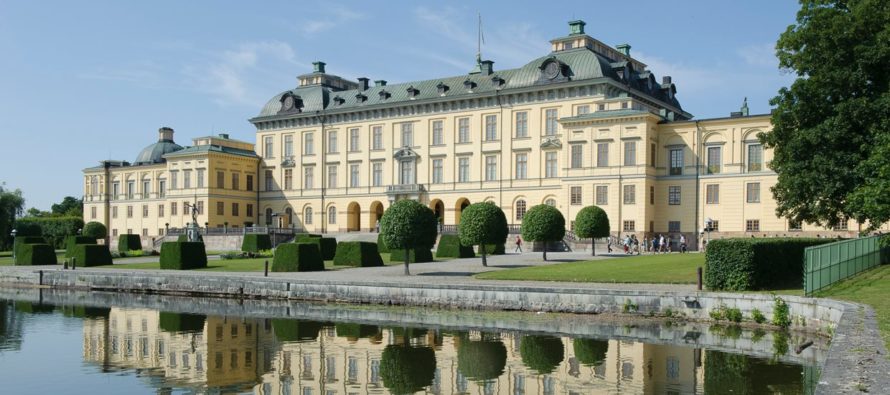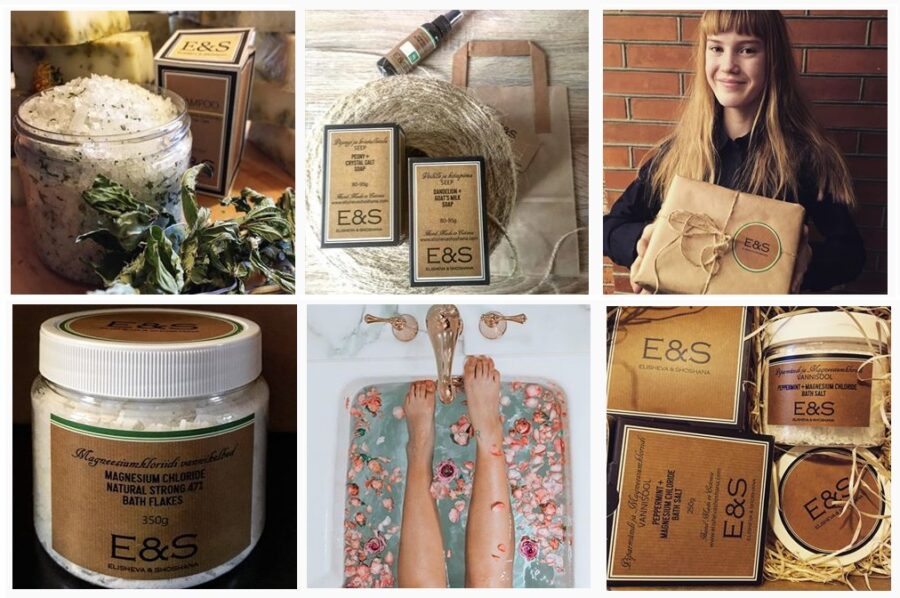The Drottningholm Palace (Swedish: Drottningholms slott) – History + videos

NordenBladet – The Drottningholm Palace (Swedish: Drottningholms slott) is the private residence of the Swedish royal family. It is located in Drottningholm (178 02 Drottningholm, Sweden). Built on the island Lovön (in Ekerö Municipality of Stockholm County), it is one of Sweden’s Royal Palaces. It was originally built in the late 16th century. It served as a regular summer residence of the Swedish royal court for most of the 18th century. Apart from being the private residence of the Swedish royal family, the palace is a popular tourist attraction.
History
Origin
The name Drottningholm (literally meaning “Queen’s islet”) came from the original renaissance building designed by Willem Boy, a stone palace built by John III of Sweden in 1580 for his queen, Catherine Jagellon. This palace was preceded by a royal mansion called Torvesund.
The Queen Dowager Regent Hedwig Eleonora bought the castle in 1661, a year after her role as Queen of Sweden ended, but it burnt to the ground on 30 December that same year. Hedwig Eleonora engaged the architect Nicodemus Tessin the Elder to design and rebuild the castle. In 1662, work began on the reconstruction of the building. With the castle almost complete, Nicodemus died in 1681. His son Nicodemus Tessin the Younger continued his work and completed the elaborate interior designs.
During the period of the reconstruction, Hedwig Eleonora was head of the regency for the still-underage King, Charles XI of Sweden, from 1660 to 1672. Sweden had grown to be a powerful country after the Peace of Westphalia. The position of the queen, essentially the ruler of Sweden, demanded an impressive residence located conveniently close to Stockholm.
During the reign of the kings Charles XI of Sweden and Charles XII of Sweden, the royal court was often present at the palace, which was used for hunting. Hedwig Eleonora used the palace as a summer residence until her death in 1715, also when she had become the undisputed host of the royal court during the absence of Charles XII in Great Northern War (1700–1721).
18th century
Drottningholm continued to serve regularly as a summer residence for the royal court during the entire 18th-century. After the death of Hedwig Eleonora in 1715, Queen Ulrika Eleonora of Sweden and King Frederick I of Sweden held court at the palace in the summer.
In 1744, the palace was given as a gift from King Frederick I to the then Crown Princess, later Queen of Sweden, Louisa Ulrika of Prussia when she married Adolf Frederick of Sweden, who became King of Sweden in 1751. During Louisa Ulrika’s ownership of Drottningholm the interior of the palace was transformed in a more sophisticated French rococo style. Louisa Ulrika was also responsible for having the Drottningholm Palace Theatre rebuilt in a grand style after the more modest original building burnt down in 1762. Louisa Ulrika and Adolf Fredrick continued to reside at the palace during their reign (1751–1771). In 1777, Louisa Ulrika sold Drottningholm to the Swedish state.
While it was owned by the Swedish state, the palace was used by King Gustav III of Sweden, son of Louisa Ulrika, as a summer residence, and a grand ceremonial court life was performed at the palace, which is considered to have been a great age for the palace, during which it was known for the elaborate masquerades and grand theatrical festivities and tournaments performed in the gardens. During the reign of Gustav IV Adolf of Sweden (reign 1792–1809) and Charles XIII of Sweden (reign 1809–1818) the palace was gradually used more sporadically. In 1797, it was the place of the great festivities when the King’s bride, Frederica of Baden, was received there upon her arrival in Sweden, during which the last so called carousel, or tournament, was staged in the palace garden. After the Coup of 1809, the deposed Gustav IV Adolf was kept here under guard in the Chinese Drawing Room for eleven days.
19th century
During the reign of Charles XIV John of Sweden (reign 1818–1844), the palace was abandoned. The King regarded it as a symbol of the old dynasty, and Drottningholm was left to decay. The buildings were damaged by the forces of nature, and their inventories were either taken away or auctioned off.
It was apparently opened to the public for the first time during this period: a tour was mentioned in 1819, and the public used the park for picnics. Occasionally, the grounds were used for public events: in 1823, the bride of the crown prince, Josephine of Leuchtenberg, was received upon her arrival to Sweden, and her name day continued to be celebrated here. Foreign guests were received in the palace gardens, such as Tsar Nicholas I of Russia.
Oscar I of Sweden took an interest in the palace, and though he preferred Tullgarn Palace as summer residence, he took care to preserve the palace by doing the first repairs in 1846. He further more used it for public celebrations, such as a reception for Pan-Scandinavian students in 1856, and in 1858, the future Gustav V of Sweden was born in the palace. Charles XV of Sweden preferred Ulriksdal Palace as his summer residence and ignored Drottningholm, but Oscar II of Sweden continued the repairs.
Both Oscar I and Oscar II were criticized for modernizing the palace and adjusting it to contemporary fashion rather than restoring it to its original state, and it was not until the reign of Gustav V that the palace and surroundings were reconstructed to their 18th-century appearance. In 1907, a major four-year restoration of the palace was begun to restore it to its former state, after which the royal court began to use it regularly again.
Royal residence
The current Swedish royal family have used Drottningholm as their primary residence since 1981. Since then, the Palace has also been guarded by the Swedish Military in the same fashion as Stockholm Palace.
The palace
The palace and its grounds have seen many renovations, changes and additions over the past 400 years. The largest renovation, in which electricity, heating, sewage, water lines were either installed or updated and the castle roof replaced, took place between 1907 and 1913. During a 20-year-period beginning around 1977, several major areas of the palace were restored and rebuilt. The library and national hall received much of the attention and fire protection was installed throughout the palace. In 1997, work began to clean and rebuild the exterior walls. This was completed in 2002.
Wish to visit it? BUY YOUR TICKET HERE.
People also search/ask:
Where does the royal family live in Sweden?
Drottningholm Palace. Drottningholm Palace, just outside Stockholm, has been home to the Swedish Royal Family since 1981. Today, however, only the King and Queen live there.
Who lives in the Swedish palace?
Stockholm Palace. Stockholm Palace or the Royal Palace (Swedish: Stockholms slott or Kungliga slottet) is the official residence and major royal palace of the Swedish monarch (the actual residence of King Carl XVI Gustaf and Queen Silvia is at Drottningholm Palace).
Is there a king in Sweden?
Carl XVI Gustaf has been King of Sweden since 1973. He is the 74th King of Sweden. Sweden’s successor to the throne is Crown Princess Victoria.
How did Sweden become a country?
During the 11th and 12th centuries, Sweden gradually became a unified Christian kingdom that later included what is today Finland. … Modern Sweden started out of the Kalmar Union formed in 1397 and by the unification of the country by King Gustav Vasa in the 16th century.
Is Sweden a democracy or a monarchy?
Politics of Sweden takes place in a framework of a parliamentary representative democratic constitutional monarchy. Executive power is exercised by the government, led by the Prime Minister of Sweden. Legislative power is vested in both the government and parliament, elected within a multi-party system.
Read also:
75 COMMON QUESTIONS with answers about Sweden
Featured image: The Drottningholm Palace, Sweden
Sources: NordenBladet.ee, wikipedia.org
 High quality & nature friendly luxury cosmetics from Scandinavia - ElishevaShoshana.com
High quality & nature friendly luxury cosmetics from Scandinavia - ElishevaShoshana.com

